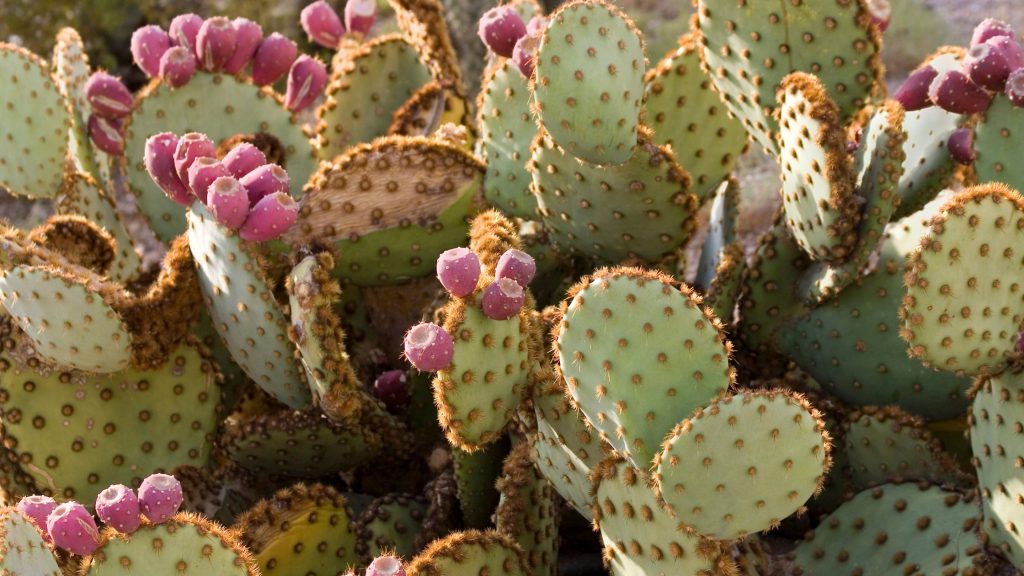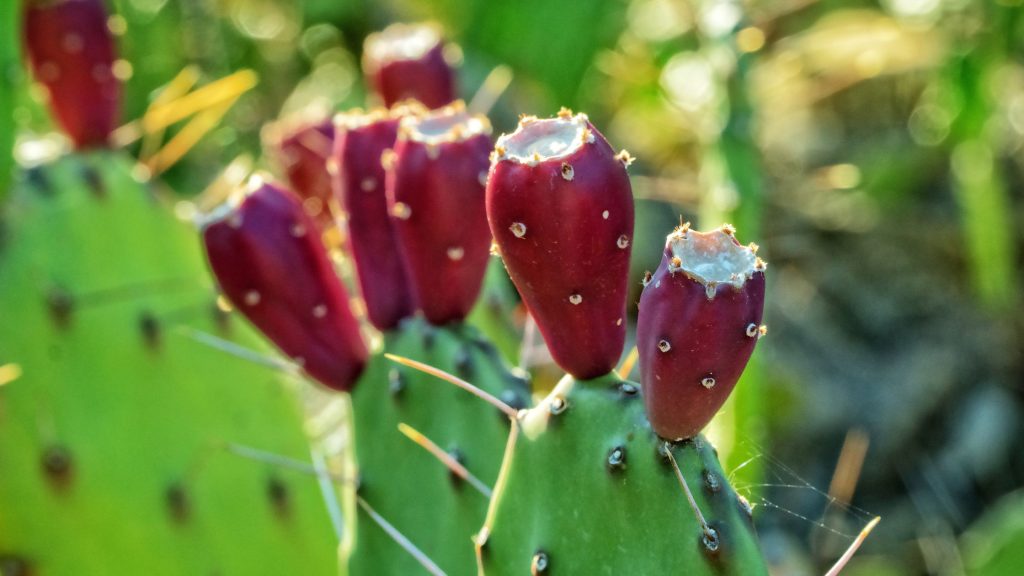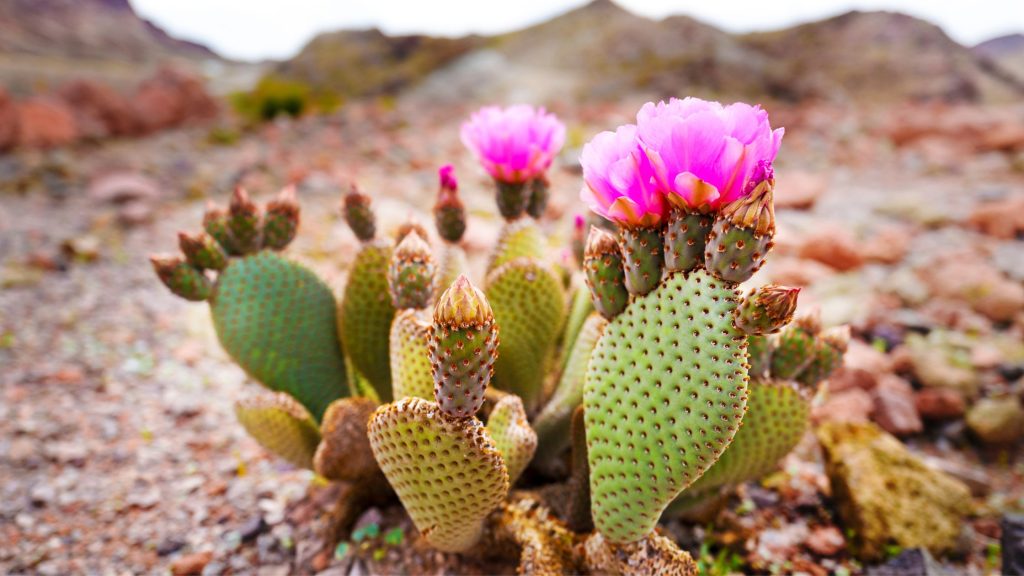Yes! Growing prickly pears doesn’t require much effort. They require soil that is well-drained and, once established, can subsist on rainwater alone. The plant should be watered every two to three weeks while it is establishing its roots.
Are you looking for a fun and easy-to-grow plant that can add some color and life to your garden? If so, then Prickly Pear Cactus may be the perfect choice for you!
This cactus is interesting because it is capable of both flowering and fruiting. During the flowering stage, the Prickly Pear Cactus size will grow and produce large red or yellow flowers. After the flowers have dried down, they will turn into fruit which is spicy, edible capsules.
If you are looking for a plant that is easy to care for, has a wide range of colors, and can provide you with some delicious fruits, then prickly pear cactus may be the perfect choice for you! We will talk about how to grow Prickly Pear Cactus from fruit later. You can even have fun growing Prickly Pear Cactus in containers.
Table of Contents
What Is The Prickly Pear Cactus?
The Prickly Pear Cactus is a type of cactus that is native to North America. It gets its name because it has small, sharp spines on its leaves and stems. These spines help to protect the plant from being eaten by animals.
The Prickly Pear Cactus is also known for its fruit, which is edible. The fruit is often used in jams, jellies, and other food products.
Where Does It Come From?
The Prickly Pear Cactus is native to North America and can be found in various regions across the continent. The prickly pear cactus is a type of cactus that produces a fruit known as the prickly pear.
The Prickly Pear Cactus is edible and has sweet, juicy flesh with small seeds throughout. The fruit’s skin is covered in tiny spines, which is why it is important to handle it with care.

The Prickly Pear Cactus is a member of the Cactaceae family and is closely related to other cacti, such as the saguaro cactus. The prickly pear cactus grows in arid climates and does not require much water to survive.
This cactus can reach up to six feet in height and spread up to eight feet wide. The Prickly Pear Cactus flowers during the springtime, and its fruits are ripe for picking in the summer and fall months. If you want to know about growing Prickly Pear from seed or growing Prickly Pear from cutting, read on1
How Does It Grow?
Prickly Pear Cactus grows in hot, dry climates and does not need much water to survive. The plant has deep roots that help it store water and stay hydrated during long periods of drought.
Prickly Pear Cactus is also adapted to tolerate high levels of heat and sunlight.
It grows in various shapes and sizes, depending on the climate and environment where it is growing.
The plant generally has a short stem with clusters of flat, rounded leaves covered in sharp spines. The cactus produces bright flowers that bloom in the springtime, followed by small, edible fruits.
Prickly Pear Cactus is native to North and South America but can now be found growing in other parts of the world. The plant is often used as an ornamental plant or for landscaping purposes.
What Are Its Benefits?
The Prickly Pear Cactus is known as the Indian fig cactus or the Barbary fig cactus. The scientific name for this cactus is Opuntia ficus-indica.
The Prickly Pear Cactus has many benefits. For one, it is a source of food and water for both humans and animals. The cactus fruit can be eaten raw or cooked, and the pads can be used to make soup or tea.
In addition, the Prickly Pear Cactus can be used as a natural medicine. The juice from the pads can be used to treat wounds, and the seeds can be used to make a type of oil that is good for the skin.

Another benefit of the Prickly Pear Cactus is that it helps to prevent desertification. This is because the roots of the cactus help to hold soil in place, preventing it from being blown away by wind or washed away by rain.
In addition, the Prickly Pear Cactus provides shade and shelter for other plants and animals in the desert.
So, as you can see, there are many benefits to the Prickly Pear Cactus. If you are ever in an area where this type of cactus grows, make sure to take advantage of its many benefits!
How Can You Use It?
There are many ways that you can use a Prickly Pear Cactus. For example, you can use it as a natural fence or barrier.
The cactus will deter people or animals from entering your yard because of its sharp needles. You can also eat the fruit of the cactus, which is called “tuna.”
Tuna is full of antioxidants and vitamins that are good for your health. If you have diabetes, the prickly pear cactus can also help to regulate your blood sugar levels.
What Are Some Recipes That Include Prickly Pear Cactus?
Prickly Pear cactus is a unique ingredient that can add a touch of sweetness and exotic flavor to any dish. Here are three recipes that include prickly pear cactus:
Prickly Pear Cactus Margaritas: These refreshing margaritas are perfect for a hot summer day. The prickly pear cactus provides a subtle sweetness that takes the edge off the tequila.
Prickly Pear Cactus Salsa: This salsa is perfect for your next Mexican-themed party. The cactus adds a lovely sweetness and texture to the salsa.
Prickly Pear Cactus Smoothie: Start your day with this nutritious smoothie. The cactus provides plenty of vitamins and minerals and a boost of energy.
How To Prepare Prickly Pear Cactus For Cooking.
If you’re lucky enough to have prickly pear cactus in your backyard, you might wonder how to prepare it for cooking. Here are some tips:
First, you’ll need to remove the thorns from the cactus. You can do this by using a sharp knife or vegetable peeler. Be careful not to cut yourself!
Next, cut the cactus into small pieces. If you’re unsure how to do this, ask your local grocery store or butcher shop for help.

Once the cactus is cut into small pieces, you can cook it any way you like! Try grilling, roasting, or even frying it. Just be sure to add some seasoning before you eat it.
Enjoy your prickly pear cactus!
How To Store Prickly Pear Cactus.
Prickly Pear Cactus is a delicious and healthy fruit that can be enjoyed fresh, cooked, or juiced. If you have an abundance of prickly pears, you may wonder how to store them so they will last longer. Here are some tips for storing prickly pear cacti:
-Wash the fruit thoroughly to remove any dirt or debris.
-Cut off the ends of the fruit and slice into desired pieces.
-Place the fruit in an airtight container or bag and store it in the refrigerator for up to two weeks.
-Prickly Pear Cactus can also be frozen for long-term storage. Place the sliced fruit on a baking sheet and freeze for several hours. Once frozen, transfer the fruit to a freezer-safe container or bag and store it in the freezer for up to six months.
Enjoy your fresh prickly pears for the best flavor and quality as soon as possible. But if you need to store them, following these simple tips will help keep them fresh and delicious for longer.
How To Choose A Ripe Prickly Pear Cactus.
If you’re looking to eat a Prickly Pear Cactus, it’s important to choose one that is ripe. Here are a few tips on how to choose a ripe prickly pear cactus:
- – Look for a cactus that is brightly colored. Ripe prickly pears will be brightly colored all over, not just on the outside.
- – Gently press on the cactus. If it yields to pressure, it is ripe. If it feels hard or firm, it is not yet ripe.
- – Smell the cactus. Ripe prickly pears will have a sweet smell. If it doesn’t smell sweet, it’s not yet ready to eat.
Conclusion
In conclusion, the Prickly Pear Cactus is an extraordinary plant that offers a wide range of advantages.
It has many applications and is a wonderful ingredient to incorporate into any recipe.
Consider using the prickly pear cactus as a substitute for an existing one in your cooking if you’re looking for something fresh.
Recent Posts
Have you found yourself wondering, 'why is my bamboo growing so slow?' Despite the fact that bamboo plants are remarkably fast-growing, it can sometimes take months (or even years!) to see any signs...
Miracle-Gro is a huge help when you are trying to get decent yields out of your plants or if you want them to thrive. However, you may have noticed that a single dose of fertilizer does little to...
